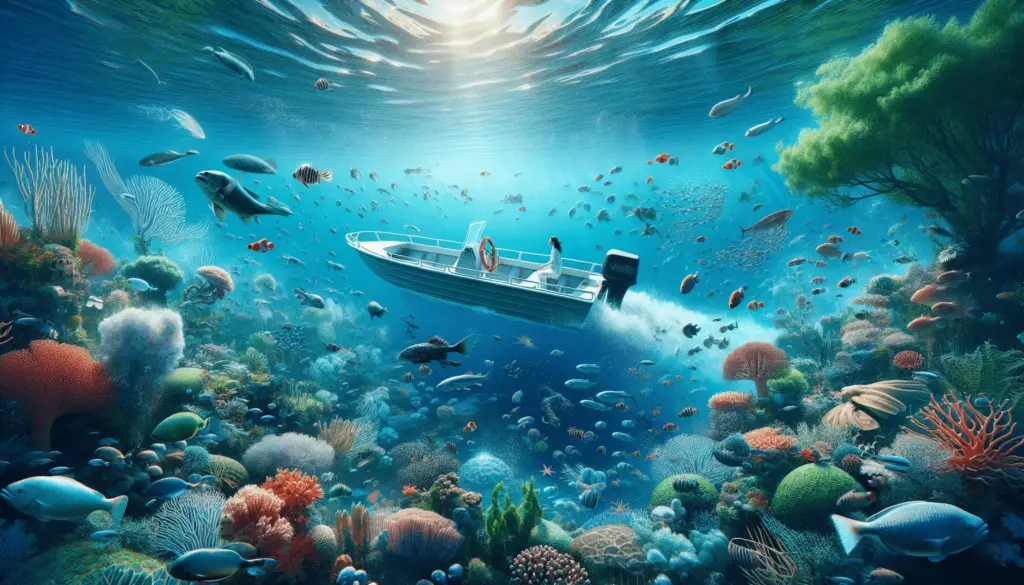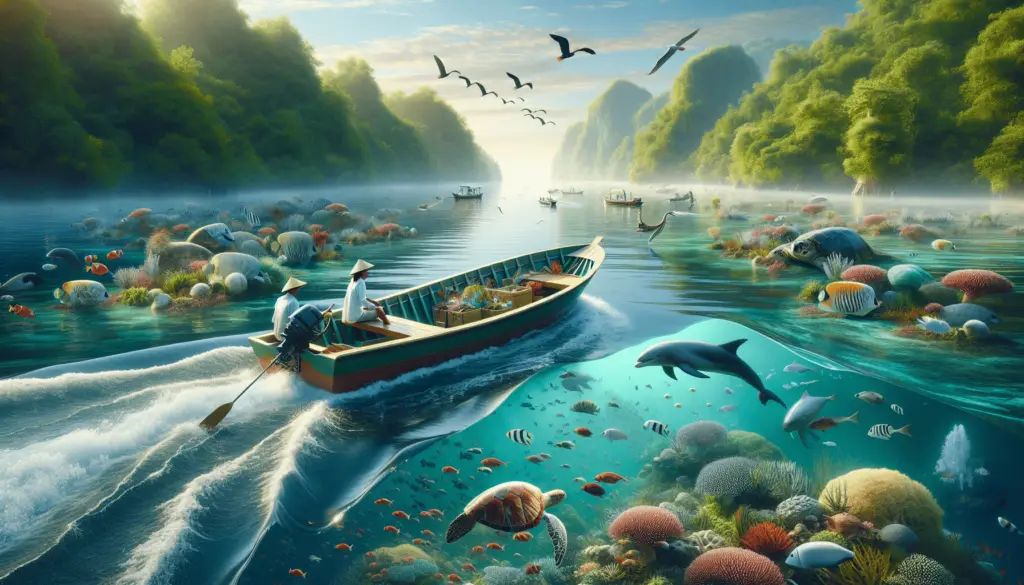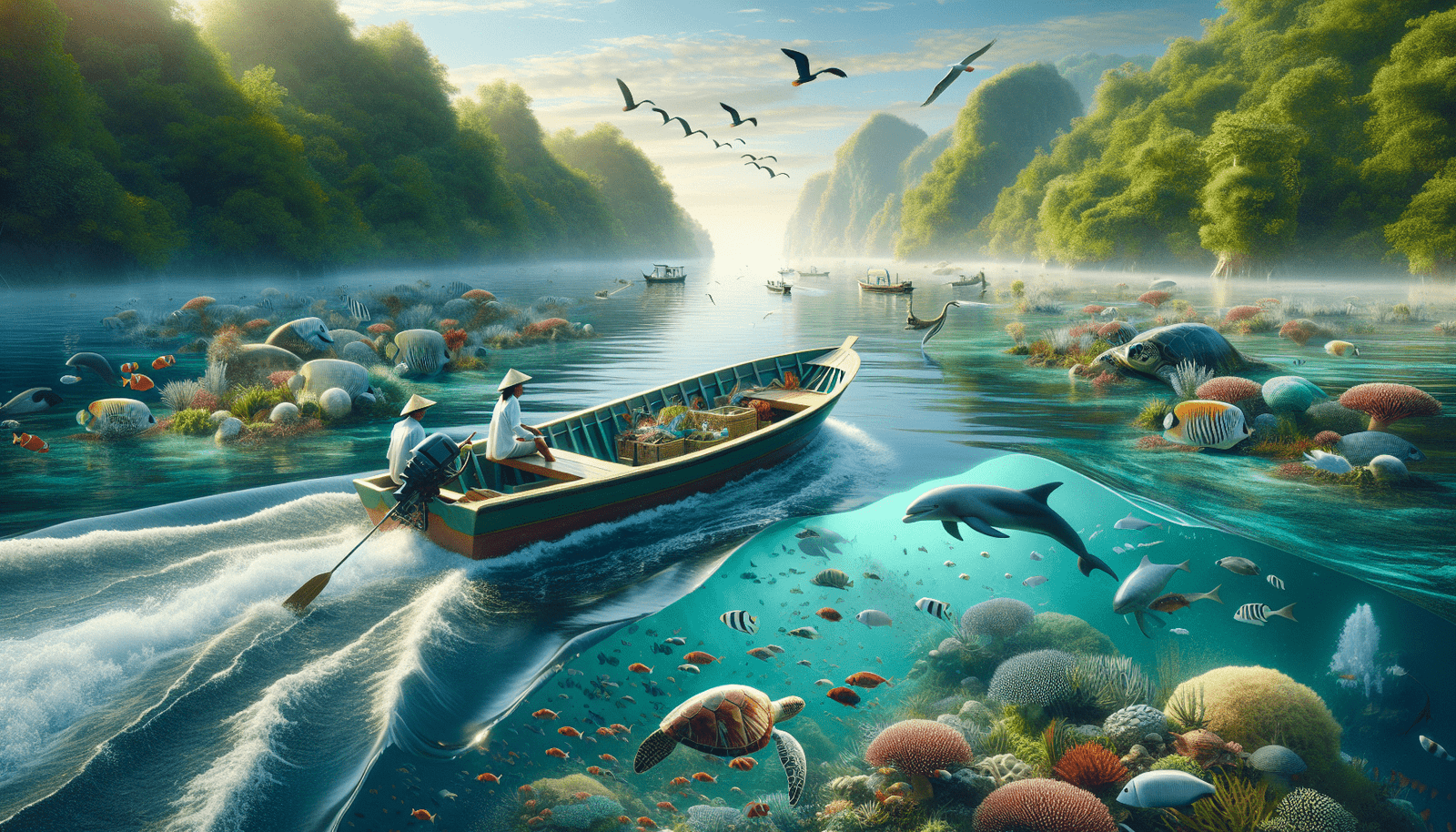Set sail on a journey to better understand the importance of responsible boating! In “Promoting Biodiversity Through Sustainable Boating Practices”, you’ll discover the nexus between nature and navigational hobbies. The wave of awareness about environmental preservation can be felt not just on the world’s shores, but on the open water too. This article illustrates how your boating habits can greatly contribute to preserving the biodiversity that our planet depends on. Through sustainable practices, every boat ride could become a stride toward conserving the world’s aquatic ecosystems. So adjust your compass, because the route towards better boating starts here!
Understanding Biodiversity
Biodiversity describes the variety and variability of life on Earth and includes every living thing from tiny organisms like bacteria to large animals and plants. It’s not just about the wide range of species either, but also includes the range of genetic material stored in all organisms.
Definition and Importance of Biodiversity
Biodiversity is also known as ‘biological diversity’. It measures variation at the genetic, species, and ecosystem level. The diversity of life forms contributes to a wide range of ecological roles and processes that are fundamental for the survival of life on Earth. These include nutrient cycling, climate regulation, water purification, and the provision of natural resources such as food, medicine, and materials.
Role of Aquatic Biodiversity
aquatic biodiversity plays a crucial role in maintaining the health of our planet. It stabilizes aquatic ecosystems and provides essential services such as oxygen production, carbon sequestration, waste treatment, and food supply. The diverse aquatic species, from microscopic plankton to the majestic whales, each play a unique part in the intricate web of marine life.
Threats to Biodiversity
Unfortunately, biodiversity globally is under severe threat due to a variety of factors such as habitat loss, climate change, pollution, invasive species, and overexploitation. These threats are accelerating the rate of extinction, disrupting ecosystems, and eroding the valuable ecosystem services that biodiversity provides.
Impact of Boating on Biodiversity
Boating activities also have significant impacts on biodiversity, particularly in the aquatic environment.
Direct Effects of Boating
Boat traffic disturbs marine life, especially sensitive species like dolphins and whales that can be startled by the noise and vibrate from engines. Moreover, physical damage from propellers and boat hulls can destroy fragile habitats like coral reefs and seagrass beds.
Indirect Effects of Boating
Indirect effects include pollution from fuel, oil, and waste discharge from on-board facilities. Such pollutants can be harmful to many marine species and degrade the water quality of aquatic ecosystems.
Particular Impact on Aquatic Species
Boats can also accidentally introduce invasive species that hitch a ride on hulls or in ballast water. These non-native species can become a major threat to local aquatic biodiversity.

Sustainable Boating Practices
Sustainable boating implies conducting boating activities in a manner that minimizes negative environmental impacts and promotes the health of aquatic ecosystems.
Definition of Sustainable Boating
Sustainable boating encompasses a broad range of practices and technologies designed to lessen the environmental impact of boating. This involves everything from waste management on board to anti-fouling techniques, aware and responsible behavior, and respect for protected marine areas.
Key Practices of Sustainable Boating
Key practices include reducing boat speed in sensitive areas, using cleaner fuels, practicing proper waste disposal, adopting anti-fouling methods that don’t harm marine life, and spreading awareness about the importance of aquatic biodiversity.
Benefits of Sustainable Boating
By adopting sustainable boating practices, not only can we reduce our environmental impact, but we can also contribute to the preservation and even rejuvenation of aquatic biodiversity.
Regulating Boat Traffic
Managing and monitoring boat traffic is crucial for preserving biodiversity in aquatic ecosystems.
Necessity for Boat Traffic Regulation
Regulating boat traffic can mitigate some of the negative effects of boating on biodiversity by limiting disturbances to sensitive species and habitats, and preventing accidents that can cause pollution.
Common Measures for Boat Traffic Regulation
Common measures include speed limits in designated areas, restrictions on boat numbers and sizes, demarcating no-go zones around sensitive habitats, and enforcing stringent standards for waste discharge.
Implication of Regulations on Biodiversity
Proper enforcement of these regulations can dramatically decrease the impact of boating activities on aquatic species and ecosystems, helping to protect and conserve biodiversity.

Anti-Fouling Techniques and Biodiversity
Anti-fouling techniques are used to prevent marine organisms from attaching to the hulls of boats, which can reduce fuel efficiency and spread invasive species.
Explanation of Anti-Fouling Techniques
Anti-fouling techniques typically involve the use of coatings or paints that contain biocides to kill or deter these organisms. However, these substances can also be toxic to non-target aquatic species and degrade water quality.
Effects of Anti-Fouling Techniques on Biodiversity
Consequently, traditional anti-fouling techniques can negatively impact aquatic biodiversity and disrupt the balance of marine ecosystems.
Sustainable Anti-Fouling Alternatives
Sustainable alternatives include biocide-free coatings and regular physical cleaning of hulls. Though they may require more maintenance, these methods are much less harmful to aquatic biodiversity.
Waste Management on Boats
Proper waste management on boats is an essential aspect of sustainable boating.
Waste Generation in Boats
Boats generate various types of waste, including garbage, sewage, and greywater from sinks and showers. If not properly managed, this waste can pollute waterways and harm aquatic life.
Environmental Impact of Boat Waste
Discharged waste can lead to an increase in nutrient levels in water, leading to harmful algal blooms and causing dead zones. It can also be ingested by marine animals, causing injury or death.
Sustainable Waste Management Techniques
Sustainable waste management techniques involve minimizing waste generation, separating waste for recycling, and safely disposing of waste at designated shore facilities instead of discharging it into the water.
Education and Awareness
Educating boaters and raising public awareness about sustainable boating and biodiversity is vital.
Importance of Education for Sustainable Boating
Education can encourage behavior change and promote better understanding and appreciation of aquatic ecosystems and the threats they face.
Current Educational Campaigns and Programs
Many organizations offer courses, seminars, and campaigns to teach boaters about the ecological impact of their activities and how to adopt sustainable practices.
Potential Impact of Improved Awareness
Increased awareness can drive demand for eco-conscious boating options, spark innovation in sustainable technologies, and inspire boaters to become stewards of the marine environment.
Government Policies and Regulations
Effective policies and regulations are key to promoting sustainable boating and protecting biodiversity.
Current Policies Affecting Boating Practices
Current policies range from emission standards for boat engines to waste discharge regulations, speed limits in sensitive areas, and the use of safe anti-fouling methods.
Potential Policies to Promote Sustainable Boating
Potential new policies could include incentives for adopting cleaner technologies, stricter enforcement of existing regulations, and more comprehensive education and outreach programs.
Role of Government in Protecting Biodiversity
Governments play a crucial role in conservation by setting and enforcing regulations, allocating resources for research and development, and leading in education and public outreach.
Role of Technology in Sustainable Boating
Technology can provide solutions to many of the environmental challenges posed by boating.
Technological Innovations in Boating
Innovations in marine technology promise cleaner, quieter engines, better fuel efficiency, biodegradable products, and systems for treating waste on board prior to discharge.
Technology’s Role in Monitoring and Regulation
Technology also plays a role in monitoring boat traffic, detecting pollution incidents, and enforcing regulations. For example, satellite monitoring can be used for compliance checks on waste discharge.
Potential for Future Technological Advances in Sustainable Boating
Continued advances hold further potential for sustainable boating. For instance, green propulsion technologies, such as electric and hydrogen fuel cells, can make boating even more eco-friendly.
Case Studies of Sustainable Boating
Case studies from around the world show that sustainable boating is not just a concept, but a reality.
Examples of Successful Sustainable Boating Practices
These examples include eco-tours that educate passengers about local ecosystems, charter companies that use solar-powered boats, and harbors that provide facilities for recycling and safe waste disposal.
Impact Assessment of Case Studies
The positive impacts of these case studies are plain to see – healthier ecosystems, increased biodiversity, happier boaters, and thriving local economies.
Lessons Learned From Case Studies
Lessons learned from these studies show that sustainable boating is not just good for the environment, but also for businesses, communities, and even for the boating experience itself. It’s a win-win situation that benefits everyone and, most importantly, our cherished biodiversity.

